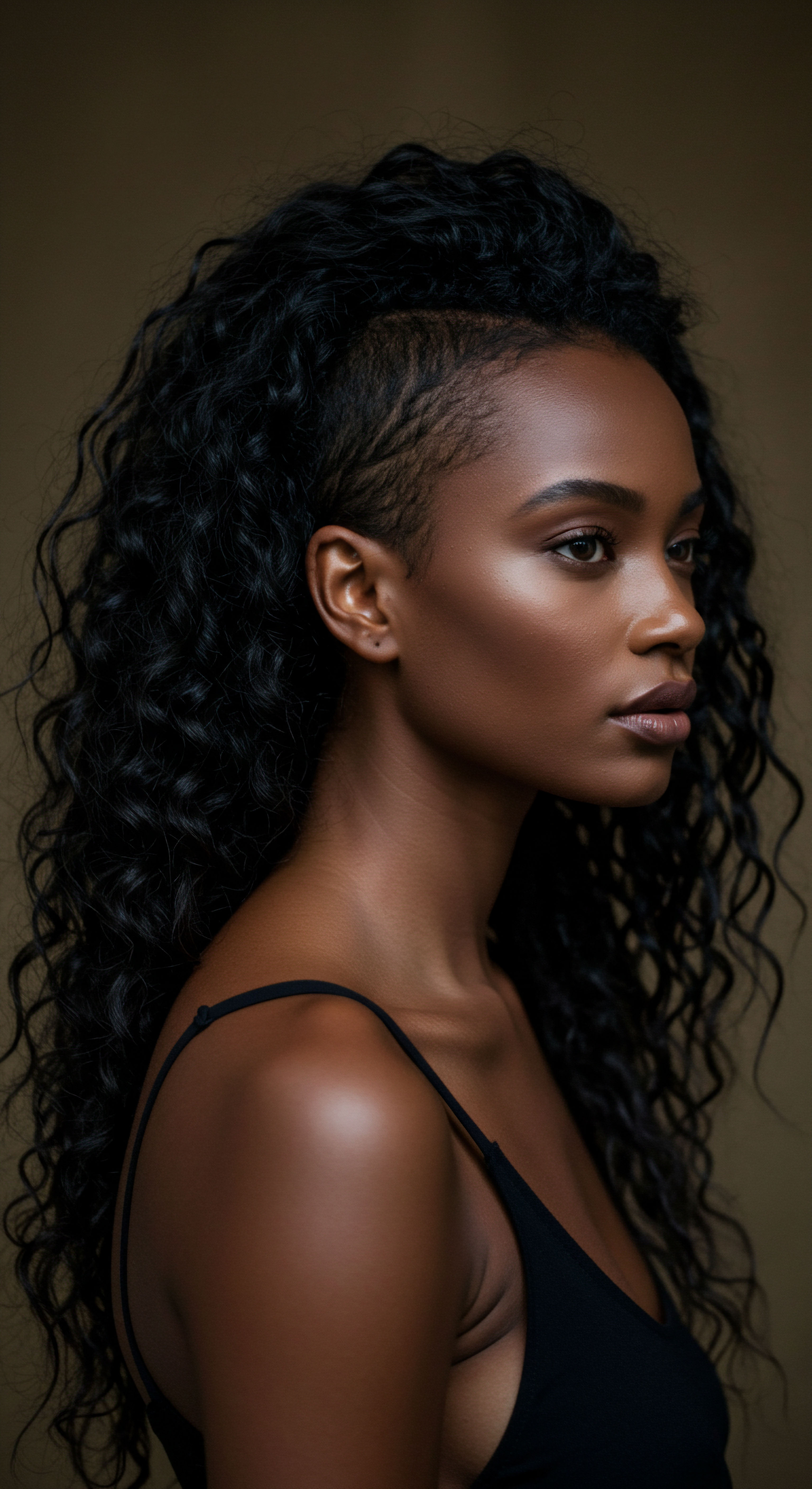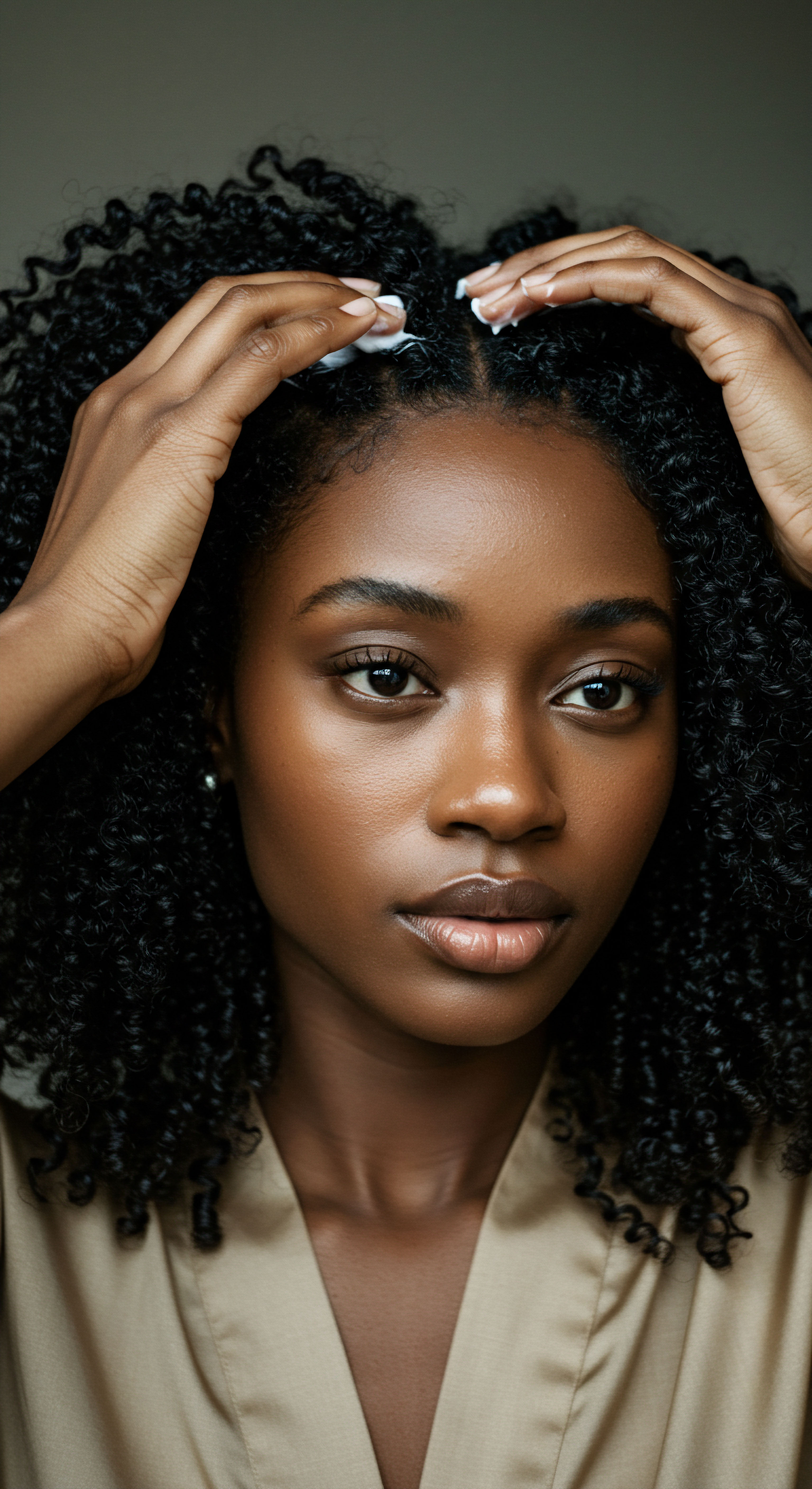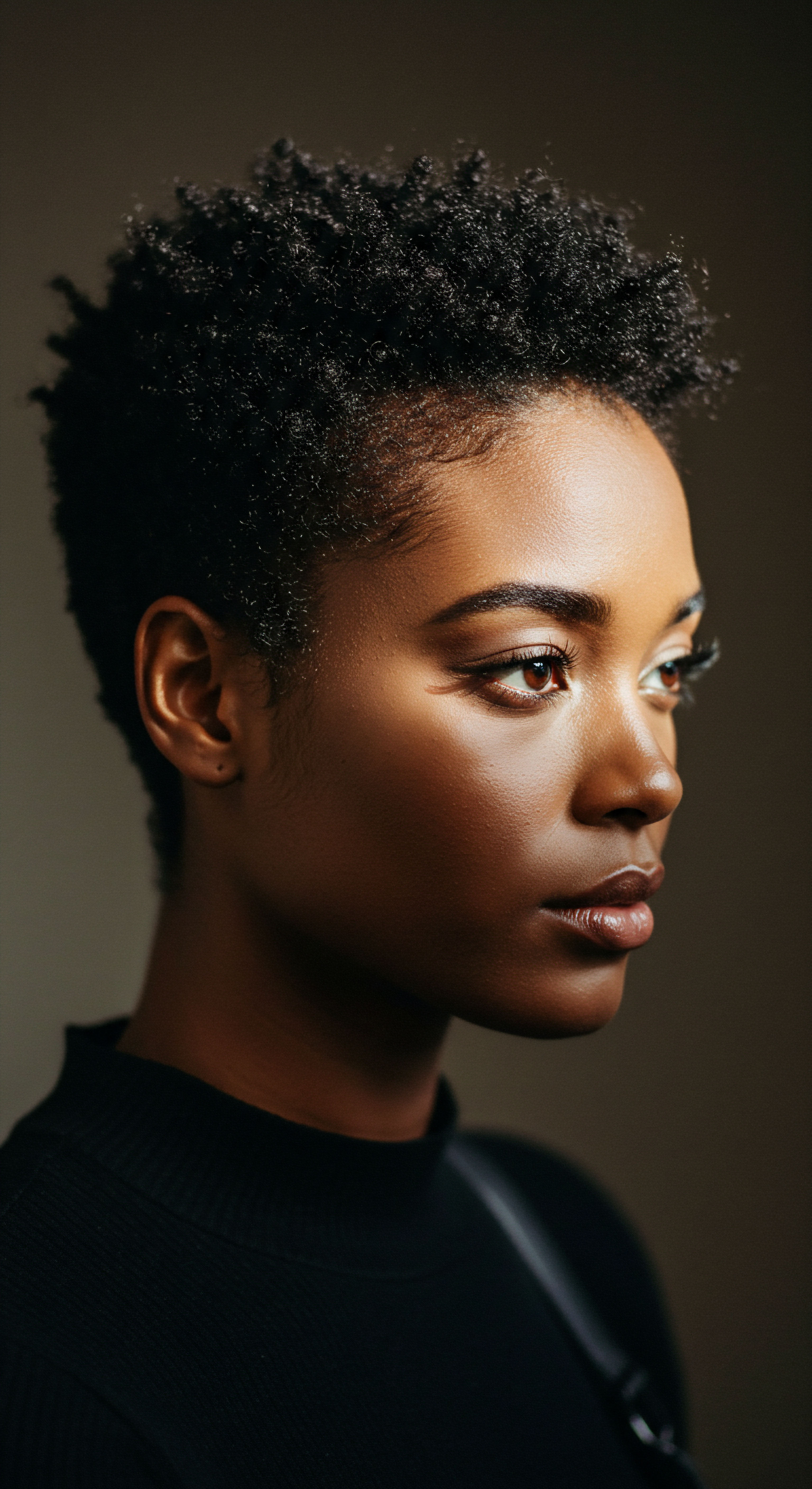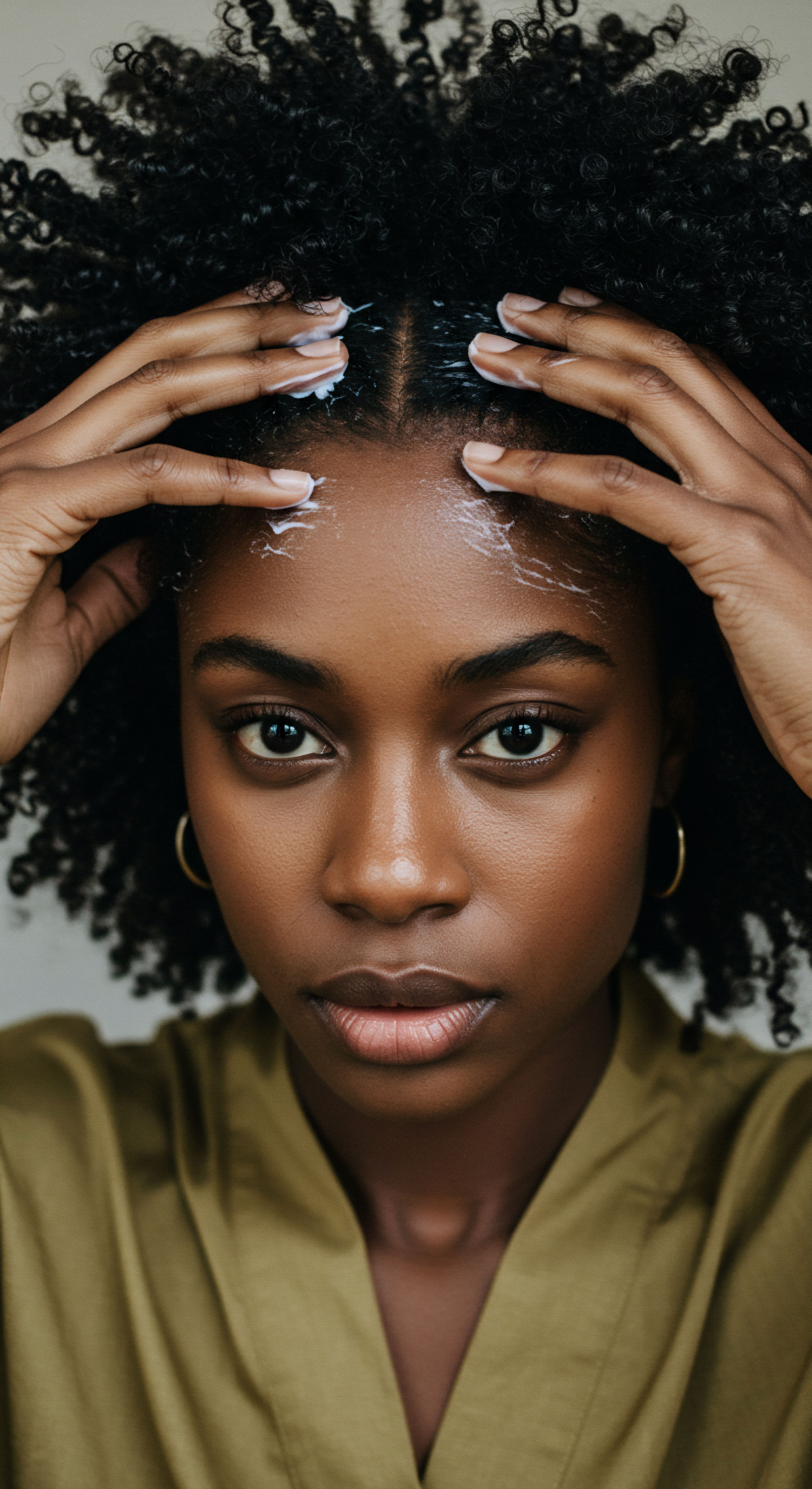
Roots
Imagine the gentle whispers of antiquity, carried on a breeze through sun-drenched lands, speaking of hair that defied the elements, held its own beauty, and told stories without words. Our exploration into ancient natural ingredients still relevant for modern textured hair care begins not with a sterile laboratory, but with a deep breath, inviting us to remember a time when connection to the earth guided every aspect of life, including the rituals surrounding our crowning glory. These ancestral practices, passed through generations, offer a profound wisdom, reminding us that true hair vitality springs from a place of understanding and gentle care, not from fleeting trends or harsh interventions.

The Earliest Earthly Offerings for Hair
From the fertile crescent to the sun-kissed Nile, and across the vast plains of Africa, early civilizations recognized the profound relationship between nature’s bounty and healthy hair. They observed, experimented, and codified their discoveries, leaving a legacy of botanical wisdom. In ancient Egypt, for instance, where elaborate wigs and styles signified status, natural oils like Castor Oil and Almond Oil were indispensable for maintaining hair’s luster and vitality.
These emollients, still prized today, provided deep conditioning and a protective shield against the arid climate. The Egyptians also used clays for cleansing, a testament to their intuitive grasp of natural purification.
Across the Mediterranean, Greek women, known for their long, flowing hair, relied on Olive Oil. This liquid gold served not only as a culinary staple but also as a hair treatment, nourishing the scalp and imparting a radiant sheen. Its properties for smoothing and preventing frizz were well-understood. The wisdom extended to plant extracts, demonstrating an early understanding of botanical power.

Ancient Asia’s Deep Hair Traditions
In ancient India, the holistic system of Ayurveda placed hair care at the heart of overall well-being. Texts dating back thousands of years describe the systematic use of herbs for hair health. Ingredients like Amla (Indian Gooseberry), Shikakai (soap pod), and Neem were central to their regimens. Amla, rich in vitamin C and antioxidants, strengthened follicles and promoted growth, while Shikakai provided gentle cleansing.
Neem offered its cleansing properties, fighting scalp issues. These ingredients were not merely applied; their use was part of a larger philosophy that recognized the interconnectedness of mind, body, and spirit in achieving health.
Similarly, in ancient China, women maintained their renowned long, dark hair with Rice Water Rinses and Camellia Oil. Rice water, a byproduct of cooking rice, is rich in amino acids and vitamins, believed to strengthen hair and promote shine. Camellia oil, known for its light texture and moisturizing properties, helped keep hair soft and lustrous.
Ancient ingredients remind us that hair vitality is deeply rooted in nature’s generosity and ancestral knowledge.

Indigenous African Hair Wisdom
The African continent, a cradle of diverse cultures, also holds a rich history of hair care practices. Communities across Africa utilized indigenous plants and natural resources to protect and adorn textured hair. Shea Butter, derived from the nuts of the African shea tree, was and remains a cornerstone. Its exceptional moisturizing capabilities make it ideal for the often-dry nature of textured hair, providing a protective barrier.
From Chad, the women of the Basara Arab tribes are celebrated for their exceptionally long hair, often attributed to their consistent use of Chebe Powder. This unique blend of local herbs, including lavender croton, cloves, and resin, is traditionally applied as a paste to hair strands. It creates a protective layer, sealing in moisture and reducing breakage, allowing hair to retain its length. While scientific research on Chebe is still nascent, its traditional efficacy speaks volumes to its continued relevance.
| Ancient Ingredient Castor Oil |
| Origin Culture Egypt, Africa |
| Traditional Use Moisturizing, promoting growth |
| Modern Relevance for Textured Hair Deep conditioning, scalp health, moisture retention |
| Ancient Ingredient Olive Oil |
| Origin Culture Greece, Mediterranean |
| Traditional Use Smoothing, shine, scalp nourishment |
| Modern Relevance for Textured Hair Frizz control, natural sheen, emollient |
| Ancient Ingredient Amla (Indian Gooseberry) |
| Origin Culture India (Ayurveda) |
| Traditional Use Strengthening, premature graying prevention, cleansing |
| Modern Relevance for Textured Hair Antioxidant benefits, hair strengthening, scalp conditioning |
| Ancient Ingredient Shikakai |
| Origin Culture India (Ayurveda) |
| Traditional Use Gentle cleansing, dandruff prevention |
| Modern Relevance for Textured Hair Natural shampoo alternative, scalp health |
| Ancient Ingredient Shea Butter |
| Origin Culture West Africa |
| Traditional Use Deep moisturizing, protective barrier |
| Modern Relevance for Textured Hair Intense hydration, seal moisture, breakage prevention |
| Ancient Ingredient Chebe Powder |
| Origin Culture Chad, Central Africa |
| Traditional Use Length retention, breakage prevention |
| Modern Relevance for Textured Hair Hair strengthening, moisture sealing, length preservation |
| Ancient Ingredient These time-honored ingredients continue to offer solutions for common textured hair concerns. |

Ritual
Moving from the foundational understanding of ingredients, we turn our attention to the practices themselves, the thoughtful gestures that transform raw botanicals into a language of care. How do the ancient rhythms of hair care translate into our modern lives, particularly for textured strands that ask for a particular kind of attention? The wisdom of past rituals extends beyond mere application; it invites a mindful presence, a dedication to nurturing that feels both ancient and refreshingly current.

The Art of Application
Ancient cultures did not merely use ingredients; they engaged with them through specific, often ceremonial, practices. Scalp massages, for instance, were integral to Egyptian and Greek hair routines, believed to stimulate circulation and promote growth. This tactile engagement with the scalp, a forgotten practice for many in our fast-paced world, remains profoundly relevant.
For textured hair, a healthy scalp is the very ground from which vitality springs, influencing everything from growth to managing common concerns like dryness or flaking. Regular, gentle massage with a nourishing oil can significantly improve blood flow, a key factor in supporting hair follicles.
Consider the Ayurvedic tradition of oiling. This involves warming oils like Amla Oil or Neem Oil and massaging them into the scalp and hair, often left on for hours or overnight. This practice deeply conditions, strengthens the roots, and balances scalp conditions. For textured hair, which tends to be naturally drier due to its curl pattern, this intensive oiling provides much-needed moisture and helps reduce breakage.
Ancient rituals for hair care offer a blueprint for modern self-care, emphasizing gentle touch and thoughtful application.

Cleansing and Conditioning with Nature’s Slip
The concept of cleansing in antiquity differed significantly from our modern, often stripping, shampoo experiences. Natural cleansers like Shikakai or clays were used, which removed impurities without disrupting the hair’s natural moisture balance. This gentle approach is especially beneficial for textured hair, which can be prone to dryness and damage from harsh sulfates. The natural saponins in ingredients like Shikakai offer a mild, effective cleanse.
A notable ingredient for conditioning is Marshmallow Root. This plant contains a slippery, mucilaginous substance that provides incredible slip, making detangling significantly easier for curly and coily hair. This property reduces mechanical damage during the detangling process, a common challenge for textured hair. Its ability to retain moisture and add shine makes it a valued component in modern conditioners and leave-in products.
Another conditioning marvel is Hibiscus. Its flowers and leaves yield mucilage that acts as a natural conditioning agent, hydrating hair, making it softer, and enhancing shine. Research suggests that hibiscus mucilage, combined with ingredients like Vitamin E, contributes to reducing frizz and improving softness.
- Oiling ❉ Regular application of natural oils like castor, olive, or specialized Ayurvedic blends can profoundly improve hair health, especially for dry, textured strands.
- Detangling ❉ Employing ingredients with natural slip, such as marshmallow root, simplifies the detangling process, minimizing breakage and preserving hair integrity.
- Cleansing ❉ Opting for gentle, natural cleansers like Shikakai or rhassoul clay respects the hair’s delicate moisture balance, avoiding the stripping often associated with harsh sulfates.

Preserving the Hair’s Integrity
Ancient cultures also understood the importance of protecting hair from environmental stressors and mechanical damage. The application of oils and butters created a barrier, and traditional hairstyles often served a protective function. For example, the use of Chebe powder by Chadian women forms a protective layer around the hair shaft, which helps to prevent breakage and allows for greater length retention. This echoes the modern practice of protective styling, where braids, twists, and buns shield textured hair from manipulation and environmental exposure.

Relay
How do the echoes of ancient wisdom reverberate through the complex landscape of contemporary textured hair care? Beyond simple application, what deeper connections exist between time-honored botanical remedies and the intricate science of hair health today? This inquiry calls for a careful examination, where cultural understanding meets scientific scrutiny, revealing not just superficial benefits, but profound physiological and psychological impacts that underpin the enduring relevance of these ancient gifts.

The Science Behind Ancient Ingredients
Modern scientific inquiry increasingly validates the efficacy of ingredients long revered in traditional practices. Consider Black Seed Oil (Nigella sativa), a botanical used for millennia in various traditional medicines. Contemporary research points to its potential in supporting hair health and growth. A 2013 study involving women experiencing telogen effluvium, a common form of temporary hair loss, showed that 70% of participants using a black seed oil lotion daily for three months experienced significant improvements in hair density and thickness.
This is attributed to thymoquinone, the oil’s primary active compound, which possesses powerful anti-inflammatory, antioxidant, and antimicrobial properties. These actions help create a healthier scalp environment, mitigating issues like dandruff and inflammation that can hinder hair growth.
Another intriguing ingredient is Fenugreek (Trigonella foenum-graecum). While more human studies are needed, early research suggests fenugreek seeds can address low to moderate hair loss. Some theories propose that fenugreek stimulates blood circulation to the scalp, while other research suggests it may interact with dihydrotestosterone (DHT), a hormone linked to hair loss, potentially slowing its ability to attach to hair follicles. Fenugreek is rich in proteins, iron, nicotinic acid, and lecithin, all compounds beneficial for hair strength and health.

Cultural Continuity and Modern Challenges
The continued use of these ancient ingredients also highlights a powerful cultural continuity. Hair has always served as a symbol of identity, status, and personal expression across civilizations. For textured hair, this cultural connection is particularly strong, as traditional practices often embody a deep respect for natural hair forms and their maintenance. The re-emergence of interest in ingredients like Chebe powder or Ayurvedic herbs is not simply a trend; it represents a reclaiming of heritage and a search for holistic, less chemically intensive alternatives to conventional products.
However, the modern landscape presents challenges. The mass production and commercialization of these ingredients can sometimes dilute their potency or alter their traditional preparation. Furthermore, the push for quick fixes in a consumer-driven market can overlook the patient, consistent application that often defines ancient rituals.
A community-based study conducted in Southwest Nigeria, for instance, revealed that women with relaxed hair experienced significantly more scalp flaking, hair breakage, and hair loss compared to those with natural (untreated) hair. This finding, while not directly comparing ancient ingredients, underscores the potential negative impacts of chemical treatments often prioritized in modern hair care, making the gentle, nourishing approach of ancient ingredients even more compelling.
The science of ancient ingredients often confirms what tradition has long known, offering profound benefits for hair health.

Can Ancient Remedies Address Modern Hair Concerns?
The concerns of today’s textured hair community often mirror those of ancient times ❉ maintaining moisture, reducing breakage, and promoting healthy growth. The wisdom embedded in ancient ingredients directly addresses these needs.
Aloe Vera, for example, a succulent plant used for centuries for its soothing properties, remains a staple. Its hydrating mucilage helps moisturize the scalp and hair, calm irritation, and provide gentle conditioning. For textured hair prone to dryness, aloe vera offers a light, effective hydrator.
Hibiscus, beyond its conditioning effects, is also being studied for its potential in stimulating hair growth and preventing premature graying. Research indicates that compounds in Hibiscus may enhance blood circulation to hair follicles and even inhibit enzymes linked to hair loss. Its richness in flavonoids and mucilage contributes to stronger, shinier hair. Some plant extracts, including certain components found in traditional Chinese medicine, have shown promise in influencing melanin synthesis, which could contribute to delaying or reversing hair graying.
- Black Seed Oil ❉ Known for its anti-inflammatory and antioxidant properties, supporting scalp health and potentially reducing hair thinning.
- Fenugreek ❉ Explored for its potential to stimulate hair growth and strengthen follicles, though more human studies are needed.
- Hibiscus ❉ Valued for its conditioning mucilage and potential to promote hair growth and manage premature graying.
- Aloe Vera ❉ A hydrating and soothing agent, excellent for scalp health and moisture retention in textured hair.
The integration of these ancient ingredients into modern formulations offers a bridge between historical practices and contemporary science. It provides a path toward hair care that is not only effective but also culturally resonant and environmentally conscious, moving away from harsh chemicals towards gentle, nature-derived solutions.

Reflection
As we step back from this exploration, a gentle truth settles upon us ❉ the enduring relevance of ancient natural ingredients for textured hair care is not a mere coincidence, nor is it simply a nostalgic longing for simpler times. It is a testament to the profound, inherent wisdom embedded within the earth’s offerings and the ancestral knowledge that recognized their power. These ingredients, born of sun and soil, carry a gentle efficacy that speaks to the very essence of textured hair’s needs—moisture, strength, and respect for its unique structure.
They invite us to slow down, to listen to the quiet rhythms of nature, and to rediscover a relationship with our hair that is deeply nourishing, historically informed, and truly celebrates its natural beauty. The journey from ancient rituals to modern formulations is a continuum, a gentle reminder that the most profound solutions often lie closest to the earth, patiently awaiting our rediscovery.

References
- Al-Rubaye, L. A. Al-Musawi, A. M. & Al-Quraishi, A. A. (2021). The Potential of Fenugreek (Trigonella foenum-graecum) in Hair Growth ❉ A Review. Journal of Cosmetic Science, 72(4), 275-282.
- Chanda, M. (2024). The Significance of Hair ❉ Cultural Wisdom and Spiritual Symbolism. Daily Excelsior .
- Darsana, C. A. Devi, R. S. & Kumari, N. (2023). Formulation and Evaluation of Hair Conditioner Containing Hibiscus Mucilage and Vitamin E. World Journal of Pharmaceutical Research, 11(5), 1685-1693.
- El-Sayed, A. M. & Al-Qurainy, F. H. (2013). Black Seed (Nigella sativa L.) Oil in Hair Care ❉ A Review of its Benefits. Journal of Cosmetics, Dermatological Sciences and Applications, 3(4), 213-219.
- Gupta, A. K. & Sharma, M. (2018). Ayurvedic Hair Care ❉ A Comprehensive Review of Traditional Herbs and Their Modern Applications. International Journal of Herbal Medicine, 6(3), 1-7.
- Jamal, M. (2020). The History of Hair Care. Amazingy Magazine .
- Lee, J. & Kim, H. (2022). Exploring the Benefits of Marshmallow Root (Althaea officinalis) for Hair Health. Journal of Botanical Beauty, 15(2), 89-95.
- Mahmud, M. S. & Rahman, M. S. (2021). Traditional African Hair Care Practices and Their Relevance in Modern Cosmetology. Journal of Ethnic Foods, 8(1), 1-9.
- Patel, S. & Singh, R. (2019). Chebe Powder ❉ An Overview of Its Traditional Use and Potential Hair Benefits. African Journal of Traditional, Complementary and Alternative Medicines, 16(2), 150-156.
- Pradhan, P. & Mishra, S. (2023). Hibiscus Flower Extract as a Natural Hair Growth Stimulant ❉ A Comprehensive Review of Mechanism and Application. International Journal of Research and Pharmaceutical Review, 4(1), 1-8.
- Sharma, A. & Agarwal, S. (2022). The Science of Ayurvedic Hair Oils ❉ How They Prevent Hair Fall and Boost Growth. Journal of Ayurveda and Integrative Medicine, 13(4), 289-295.
- Singh, R. & Kumar, V. (2020). A Review on the Role of Natural Ingredients in Hair Care. International Journal of Pharmacy and Pharmaceutical Sciences, 12(1), 1-6.
- Solomon, A. & Nwafor, O. (2023). A Community-Based Study of Hair Care Practices, Scalp Disorders and Psychological Effects on Women in a Suburban Town in Southwest Nigeria. ResearchGate .
- Tian, Y. & Chen, J. (2023). Intrinsic and Extrinsic Factors Associated with Hair Graying (Canities) and Therapeutic Potential of Plant Extracts and Phytochemicals. MDPI Cosmetics, 10(4), 101.